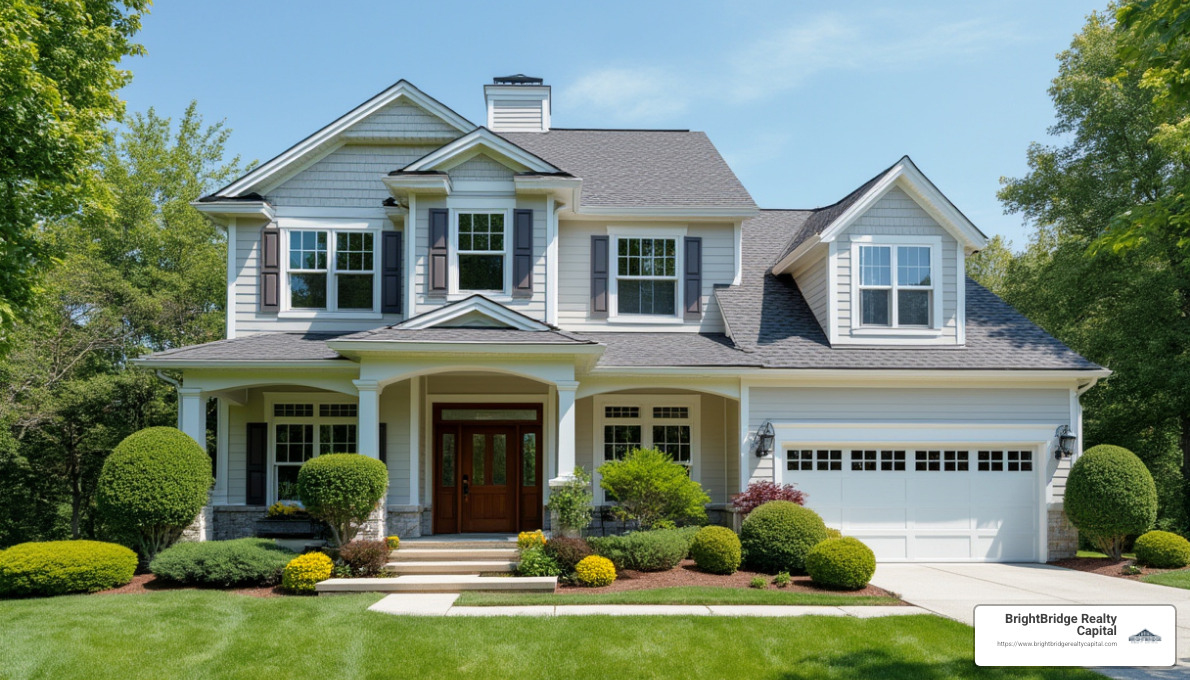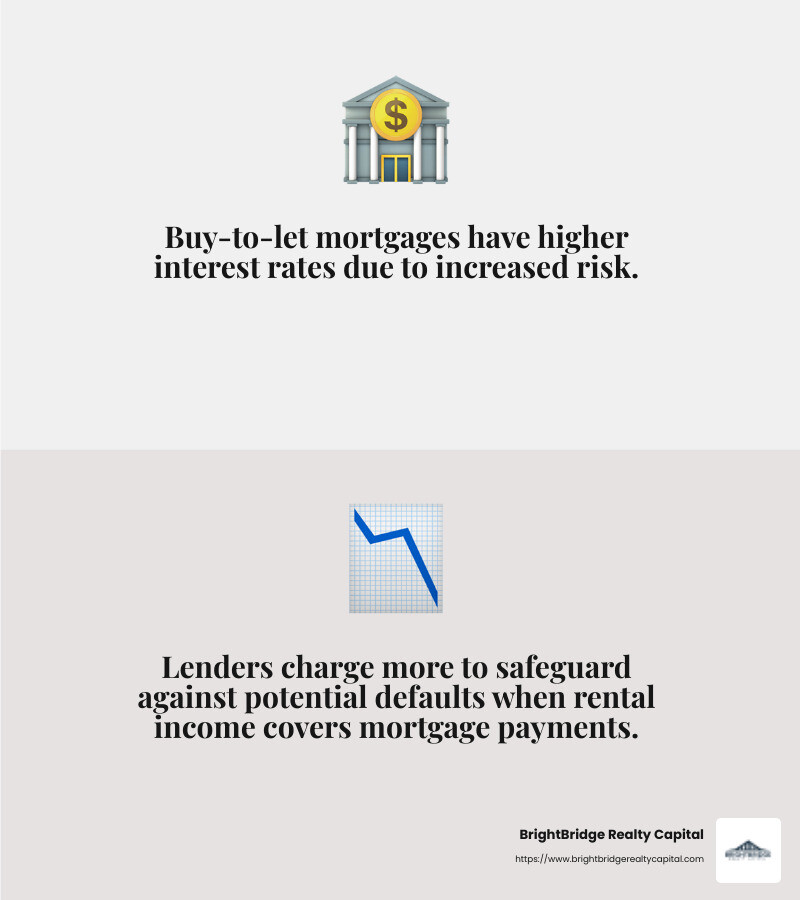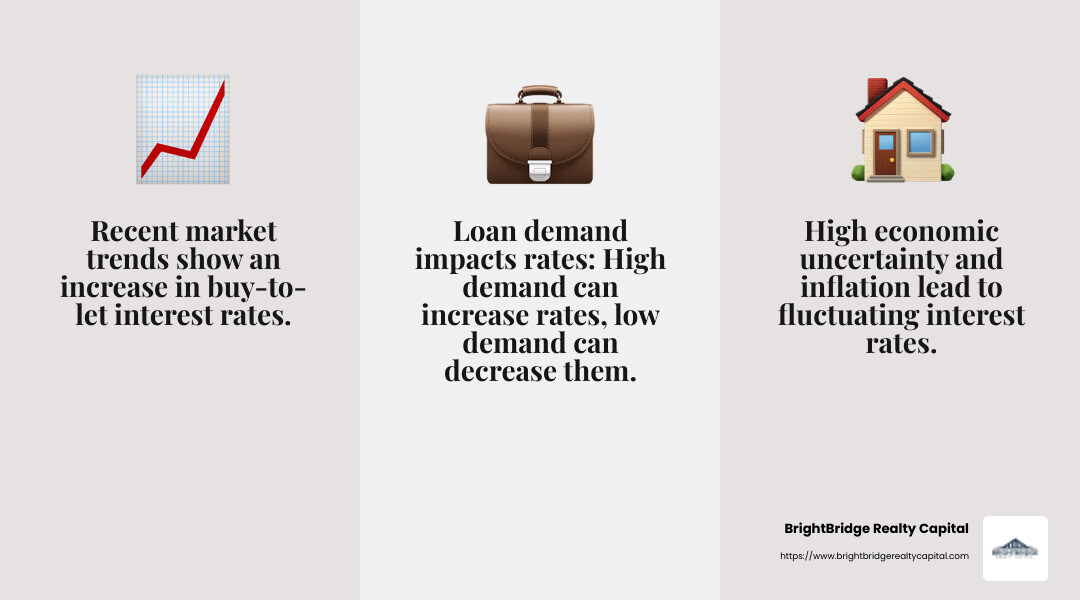The Buy-to-Let Interest Rate Hunt: How to Find the Best Rates

Interest rate on buy to let property can significantly influence the profitability of real estate investments. As a savvy investor, understanding these rates is crucial to maximizing returns.
- Current buy-to-let interest rates typically range from 4.19% to 4.98% for fixed options.
- These rates are often higher than those for primary residences due to perceived risks.
- Factors like credit score, down payment size, and loan-to-value ratio can further affect the rate you're offered.
Investment properties are a popular choice for those looking to generate income through rental yields. However, securing the best mortgage rates involves navigating through various lender conditions and market dynamics. Higher rates for buy-to-let properties reflect the increased risk lenders associate with these investments.
Knowing how to steer these intricacies can help you secure rates that align with your investment goals. Our guide will explore the factors influencing buy-to-let mortgage rates and provide strategies to ensure you find the most favorable terms.

Interest rate on buy to let property definitions:
- interest rate for investment property today
- conventional mortgage rates investment property
- refinancing primary residence to investment property
Understanding Buy-to-Let Interest Rates
Why Are Buy-to-Let Rates Higher?
When diving into buy-to-let mortgages, one of the first things you'll notice is that interest rates on buy-to-let properties tend to be higher than those for primary residences. But why is this the case?
The answer lies in risk assessment. Lenders consider buy-to-let properties riskier because they are often reliant on rental income to cover mortgage payments. If your tenant fails to pay rent, there's a higher chance you might default on the loan. This increased risk prompts lenders to charge higher rates to safeguard their investment.

Default likelihood is another key factor. Economic hardships can affect a renter’s ability to pay, making buy-to-let loans more prone to default during tough times. As a result, lenders adjust interest rates to reflect this potential risk.
Factors Influencing Buy-to-Let Rates
Several factors determine the interest rate you'll be offered on a buy-to-let property. Here's a look at the most significant ones:
Credit Score: A high credit score can help you secure a lower interest rate. Lenders view borrowers with strong credit as less risky. Generally, you'll need a higher score for a buy-to-let mortgage compared to a primary residence loan.
Down Payment: The size of your down payment can also impact your interest rate. A larger down payment reduces the lender's risk, often leading to better rates. For buy-to-let properties, a 25% down payment is typically recommended.
Loan-to-Value Ratio (LTV): This ratio compares the loan amount to the property's value. A lower LTV indicates less risk for the lender, which can result in more favorable interest rates.
Lenders also consider market conditions and economic factors when setting rates. During periods of economic uncertainty or high inflation, rates can fluctuate, affecting the cost of your buy-to-let mortgage.
Understanding these elements can empower you to negotiate and secure the best possible rates for your investment properties. Stay informed and consider these factors when planning your next real estate investment.
How to Secure the Best Buy-to-Let Interest Rates
Navigating buy-to-let mortgages can feel like a maze, but with the right strategies, you can secure the best interest rate on buy-to-let property. Here's how:
Tips for Lowering Your Interest Rate
Improve Your Credit Score: A high credit score is your ticket to lower interest rates. Lenders see you as less risky if you have a strong credit history. Aim for a score of at least 620, though higher is always better.
Make a Larger Down Payment: The more you can put down upfront, the better. A 25% down payment is often recommended for buy-to-let properties. This not only reduces your loan amount but also lowers your risk profile in the eyes of lenders.
Reduce Existing Debt: Lowering your debt-to-income ratio is crucial. Pay down credit cards and other debts to show lenders you can manage monthly payments comfortably. This can significantly impact the rate you are offered.
Shop Around: Don’t settle for the first offer you get. Compare rates from different lenders. Shopping around could save you thousands over the life of your loan.
Negotiate: Rates are not set in stone. Use quotes from various lenders as leverage to negotiate better terms. Lenders often have some flexibility, especially if you have a strong financial profile.
Comparing Lenders for the Best Rates
Lender Comparison: Not all lenders are created equal. Some might offer better rates for buy-to-let properties than others. Local banks and credit unions might provide more personalized service and competitive rates.
Get Rate Quotes: Request quotes from multiple lenders. This will give you a clear picture of the market and help you identify the best deals.
Look for Personalized Offers: Some lenders offer customized deals based on your financial situation. Don’t hesitate to ask for custom options that might better suit your needs.
Consider Non-QM Lenders: If traditional lenders don't meet your needs, explore non-qualified mortgage (non-QM) lenders. They often have more flexible requirements.
By following these steps, you can improve your chances of securing a favorable interest rate on your buy-to-let investment, maximizing your long-term returns.
Now that you have a strategy for securing the best rates, let's dive into current trends affecting buy-to-let interest rates and what you can expect in the near future.
Interest Rate on Buy-to-Let Property: Current Trends
The interest rate on buy-to-let property is not just a number; it's a reflection of various market trends and economic factors that play a big role in the real estate landscape. Understanding these trends can help you make informed decisions about your investment.
How Market Conditions Affect Rates
Market Trends: Recently, buy-to-let interest rates have been on the rise. This is partly because lenders see these investments as higher-risk compared to primary residences. The potential for a tenant to default on rent payments adds to this perceived risk.
Economic Factors: Economic uncertainty, like inflation and changing government policies, can cause interest rates to fluctuate. For example, when inflation is high, central banks might increase interest rates to cool off the economy. This, in turn, affects mortgage rates, including those for buy-to-let properties.
Rate Fluctuations: Mortgage rates are also influenced by the demand for loans. When fewer people are buying properties, lenders might lower rates to attract borrowers. Conversely, high demand can lead to higher rates.

Forecasting Future Rate Changes
Economic Uncertainty: With ongoing global changes, predicting exact rate changes is tricky. However, keeping an eye on economic indicators, like job growth and inflation rates, can provide clues about where rates might head.
Inflation Impact: If inflation continues to rise, expect interest rates to follow suit. Higher inflation usually leads to higher interest rates as lenders try to maintain their profit margins.
Economic Outlook: Experts suggest that if the economy stabilizes, we might see a plateau in interest rates. However, any unexpected economic downturns could lead to further fluctuations.
Interest Rate Predictions: While it's hard to predict exact numbers, some analysts forecast a gradual increase in buy-to-let interest rates over the next few years. Staying informed about economic news and trends can help you anticipate these changes and plan accordingly.
Keeping a pulse on these trends will not only help you steer the current market but also prepare for future investments. Next, we'll tackle some common questions about buy-to-let interest rates to further improve your investment strategy.
Frequently Asked Questions about Buy-to-Let Interest Rates
Are Buy-to-Let Rates Higher Than Residential Rates?
Yes, buy-to-let rates are typically higher than those for residential properties. This difference arises because lenders consider buy-to-let investments riskier. The risk stems from the chance that tenants might fail to pay rent, potentially leading to missed mortgage payments. Generally, buy-to-let interest rates are about 0.50% to 0.75% higher than those for primary residences. This margin compensates for the increased risk that lenders perceive with these types of investments.
Can You Get a Fixed Rate for Buy-to-Let Mortgages?
Absolutely, you can secure a fixed rate for a buy-to-let mortgage. Fixed-rate mortgages are popular among investors because they offer stability. With a fixed rate, your monthly payments remain consistent over the fixed period, typically two to five years. This predictability can be beneficial for budgeting and financial planning. However, fixed rates for buy-to-let properties might be slightly higher than variable rates, as they offer protection against potential interest rate hikes during the fixed period.
What is the Minimum Down Payment for Buy-to-Let?
The minimum down payment for a buy-to-let property usually starts at 15% to 25%. For a single-unit investment property, a down payment of at least 15% is common, although this may come with higher interest rates and mortgage insurance. For properties with two to four units, expect to put down at least 25%. A larger down payment can often lead to better interest rates and lower overall costs. If you plan to live in one of the units, you might qualify for an FHA loan with as little as 3.5% down.
These FAQs address some of the key concerns investors have about buy-to-let mortgages. Understanding these aspects can help you make more informed decisions and optimize your investment strategy. Next, we’ll explore the conclusion and summarize the benefits of partnering with BrightBridge Realty Capital for your investment needs.
Conclusion
Investing in buy-to-let properties can be a lucrative strategy, but navigating the complexities of interest rates on buy-to-let property requires a strategic approach. Partnering with BrightBridge Realty Capital can provide the edge you need in this competitive market.
Why Choose BrightBridge Realty Capital?
At BrightBridge Realty Capital, we specialize in providing fast and flexible real estate financing solutions. Our competitive rates and quick closing times—often within a week—set us apart. We understand that each investor's strategy is unique, and our team is committed to tailoring loan solutions that align with your specific goals.
Investment Strategy and Long-Term Benefits
A well-thought-out investment strategy is crucial for success in the buy-to-let market. By focusing on improving credit scores, reducing debt, and making larger down payments, investors can secure better rates and maximize returns. BrightBridge Realty Capital supports your strategy by offering direct lending without intermediaries, ensuring a seamless and efficient process.
Investing in buy-to-let properties not only provides a steady income stream but also offers long-term benefits like property appreciation and tax advantages. With BrightBridge Realty Capital, you gain a trusted partner who can help you capitalize on these opportunities while minimizing risks.
For more information on how BrightBridge Realty Capital can support your investment journey, visit our website today. Let us help you bridge the gap to smart real estate financing and achieve your investment goals.


